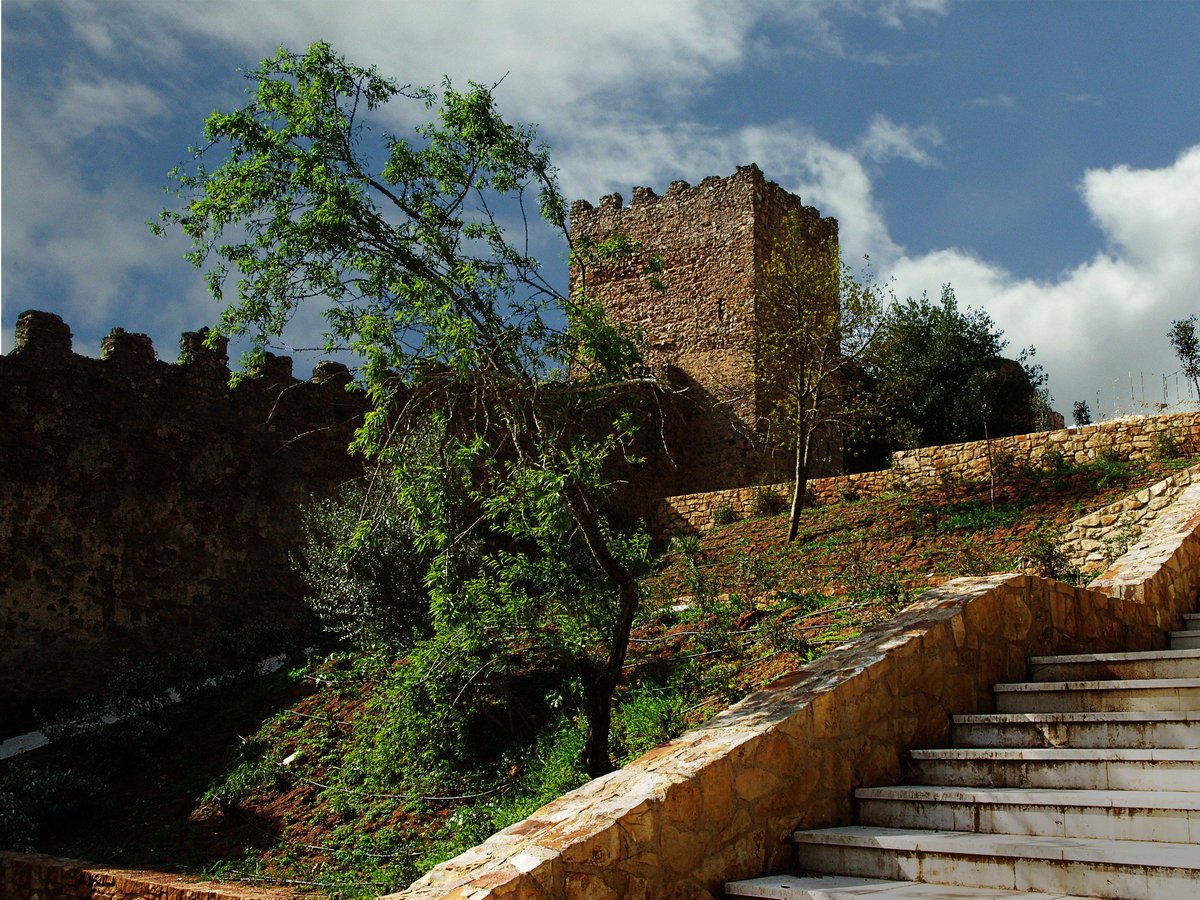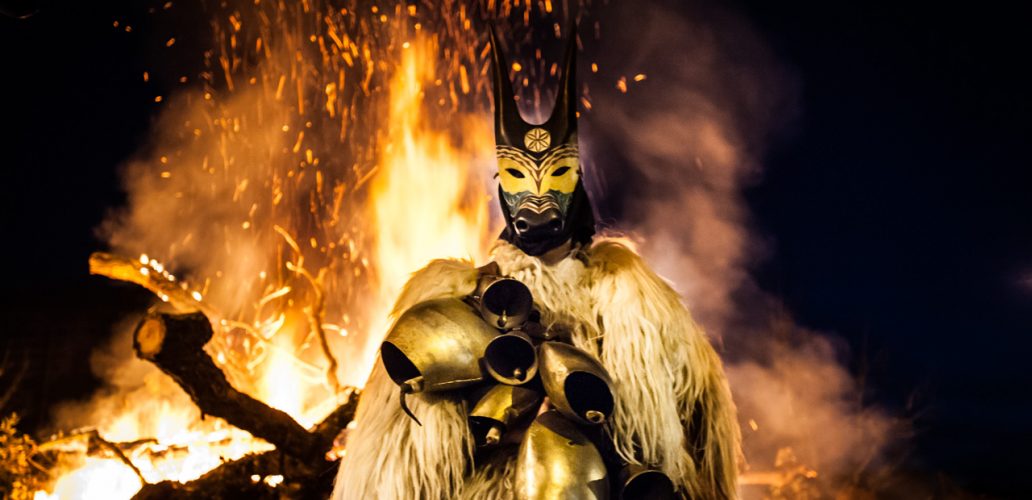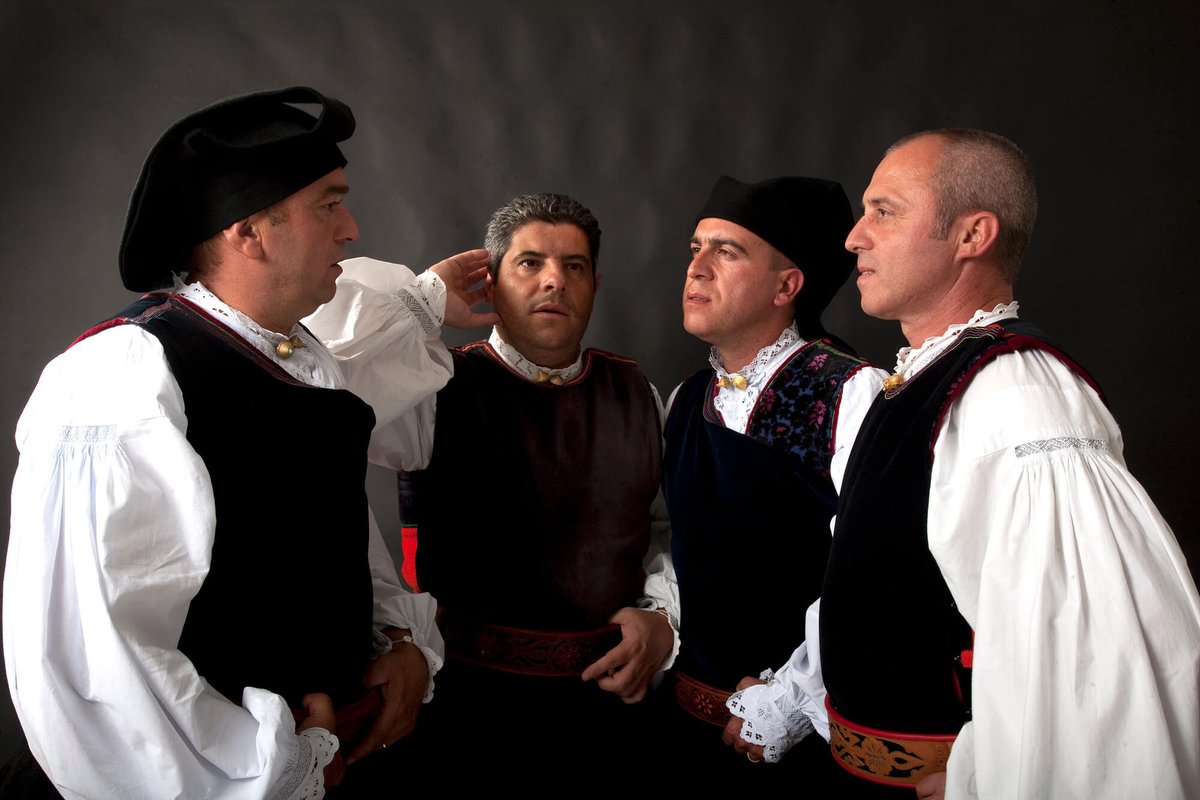
Laconi rises in the plain of Sarcidano, border between the mountainous lands of Barbagia and the fertile, wheat fields of Campidano and Marmilla, position which gives it a fundamental role in History.
The area has been inhabited since Neolithic times and we find villages from-
The area has been inhabited since Neolithic times and we find villages from-
-Nuragic and Prenuragic ages. One of the most important discoveries has been the recovering of the decorated menhirs now kept in the Museum of Sardinian Prehistoric Statues, hosted in Palazzo Aymerich ⬇️. These menhirs, all coming from the surrounding area of Laconi, show- 



-incisions and decorations which have been interpreted as male and female attributes. The menhirs show eyebrows and eyes. Female ones show breasts while male ones have a dagger at the level of the waist. A female one also has a representation of a false door, reminding of-
-domus de janas. Many menhirs show the symbol called "the upside down man", thought to represent the dead passing to the hereafter.
Laconi became an important centre at the border of the Roman Empire, when it was probably used to control the native populations who refuged-
Laconi became an important centre at the border of the Roman Empire, when it was probably used to control the native populations who refuged-
-in the mountains of Barbagia.
Then we have a hole in Sardinian history and we find Laconi again during the Age of the Judicates. In particular, we find it as a "patronymic", indicating the (probable?) origin of the ruling families from the town. In fact we find the families-
Then we have a hole in Sardinian history and we find Laconi again during the Age of the Judicates. In particular, we find it as a "patronymic", indicating the (probable?) origin of the ruling families from the town. In fact we find the families-
-of the judikes of Torres, de Lacon-Gunale/Thori; of Arborea, de Lacon-Serra; of Gallura, de Lacon; of Calari, de Lacon-Massa (Massa starting from 12th century). It is therefore likely the ruling houses (maybe only one with several branches?) was originating from Laconi.
During the Middle Age, Laconi was part of the Judicate of Arborea. Laconi has one of the best conserved medieval castles, now part of the Aymerich Park. It is not certain who built it and when. The castle underwent several restorations, as showed by the windows in Catalan-gothic- 



-style and was inhabited until relatively recent times by the Aymerich family.
An inscription at the entrance shows the date of 1053, bordering the period of division of Sardinia into 4 Judicates, but it is thought the stone has been reused later on and the castle should be-
An inscription at the entrance shows the date of 1053, bordering the period of division of Sardinia into 4 Judicates, but it is thought the stone has been reused later on and the castle should be-
-of 13th century. This doesn't exclude the fact it could have been built over existing fortifications of Roman Era.
After the Catalan conquest and the completion of the Kingdom of Sardinia, Laconi became a fiefdom in the hands of the Castelvì family, who were later on named-
After the Catalan conquest and the completion of the Kingdom of Sardinia, Laconi became a fiefdom in the hands of the Castelvì family, who were later on named-
-Marquess of Laconi. The title is one of the oldest of Sardinian tradition, competing with the Alagon of Villasor, both families of Catalan/Spanish descent which effectively became Sardinian after moving in the Island. This old tradition put them often at the head of the-
-Stamento militare of the Sardinian Parliament. This happened in 1668, with don Agostino de Castelvì, Marquess of Laconi, who defended the position of Sardinians by refusing to pay the decennial donative to the king. He was murdered in uncertain circumstances, leading to-
-the events which go by the name of the Laconi and Camarassa homicides:
https://twitter.com/DrWatson_writer/status/1382729213065752576?t=44NBvUSrAWZfy0CEfb10xw&s=19
Following those events, for hereditary reasons, the title of Marquess of Laconi fell into the hands of another Sardinian noble family, the Aymerich, whose bloodline still exists today. In the 19th century, they had their palace built in the centre of the town by the architect-
-Gaetano Cima. The palace hosts now the Menhir Museum and many rooms are still adorned in the original taste, with wallpapers, drawings and paintings.
An important representative of the family of the 19th century is don Ignazio Aymerich Ripoll, who has been the head of the-


An important representative of the family of the 19th century is don Ignazio Aymerich Ripoll, who has been the head of the-



-Stamento militare and Senator of the Parliament of the Kingdom of Sardinia, based in Turin from 1848. He's been major of Laconi, writer and fond of botany. He collected several exotic plants during his travels and put up what we call today Aymerich Park, an unspoiled forest- 





• • •
Missing some Tweet in this thread? You can try to
force a refresh























